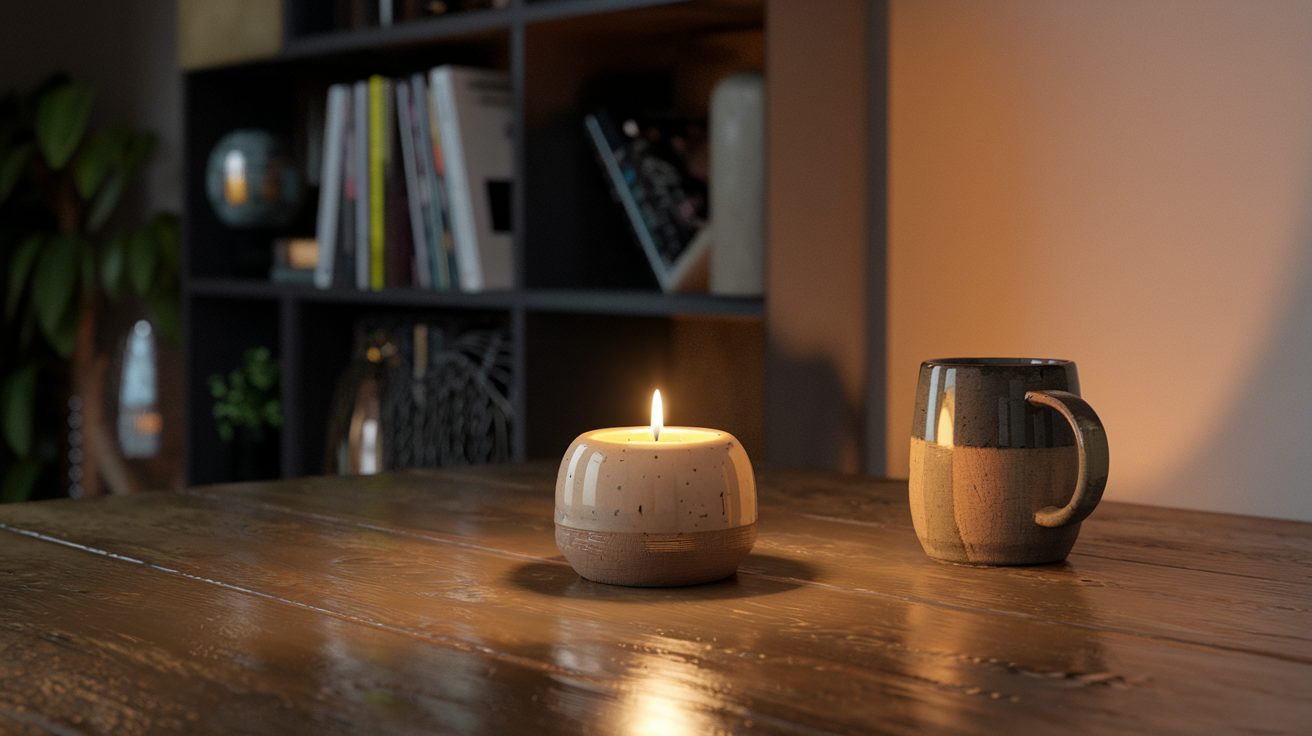Top Home-Fragrance Trends for 2025
As we move through 2025, home fragrance trends are evolving to reflect our changing relationship with our living spaces. From the rise of therapeutic scenting to sustainable fragrance practices, here's what's defining the aromatic landscape of homes this year.
1. Functional Fragrances: Scents with Purpose
The biggest shift we're seeing this year is the move toward functional fragrances—scents designed with specific wellness benefits in mind. Consumers are no longer satisfied with candles that simply smell good; they want fragrances that serve a purpose.
Sleep-enhancing lavender and chamomile blends, focus-boosting rosemary and mint combinations, and mood-lifting citrus and herb profiles are becoming staples in home fragrance collections. These purposeful scents are backed by aromatherapy principles and often incorporate essential oils known for their therapeutic properties.
2. Place-Based Fragrances: Scent Tourism
With international travel having faced restrictions in recent years, "scent tourism" has emerged as a fascinating trend. Consumers are seeking candles and diffusers that transport them to specific destinations through carefully crafted fragrance profiles.
Think beyond generic "ocean breeze" or "tropical paradise" scents. The trend is toward highly specific place-based fragrances like "Kyoto Cherry Blossom Walk," "Amalfi Lemon Grove," or "Pacific Northwest Forest." These complex fragrance stories incorporate authentic regional notes and often come with origin stories about the location that inspired them.
3. Sustainable and Clean Fragrances
Sustainability continues to drive innovation in home fragrances. Consumers are increasingly concerned about the environmental and health impacts of synthetic fragrances, leading to several key developments:
- Transparency in Ingredients: Brands are being more transparent about their fragrance compositions, moving away from the generic "fragrance" catch-all term on labels.
- Plant-Based Innovations: New extraction methods are allowing for more sustainable plant-based fragrance compounds that mimic complex scents without synthetic ingredients.
- Carbon-Neutral Fragrance Chains: Leading brands are offsetting the carbon footprint of their fragrance development and manufacturing processes.
- Upcycled Fragrance Materials: Innovative companies are creating new fragrance compounds from byproducts of other industries, such as citrus peels from juice production.
4. Mood-Based Fragrance Layering
Fragrance layering—the practice of combining multiple scents to create a personalized aromatic experience—has moved from personal perfumery into the home. Consumers are building fragrance "wardrobes" of complementary candles and diffusers that can be used together in different combinations.
This trend is supported by the rise of fragrance education content on social media, where influencers share tips for creating signature home scent combinations. Brands are responding with candle sets explicitly designed for layering, with complementary scent profiles that enhance each other when burned together.
5. Nostalgic and Heritage Scents
In uncertain times, consumers often find comfort in nostalgia. We're seeing a renaissance of heritage scents with modern updates—fragrances that evoke childhood memories or cultural traditions.
These nostalgic fragrances range from sophisticated reformulations of classic scent profiles (like modernized versions of 1950s home scents) to culturally specific fragrances that celebrate heritage (like candles based on traditional ceremonial incenses or regional cooking spices). The key is authenticity and storytelling, connecting consumers to collective or personal history through scent.
6. Sophisticated Gourmand Evolution
Gourmand scents—those reminiscent of edible treats—have been popular for decades, but they're evolving in 2025 toward more sophisticated, less literal interpretations. Moving beyond simple "vanilla cupcake" or "chocolate chip cookie" fragrances, today's gourmand candles feature complex compositions that hint at culinary experiences without being overwhelmingly sweet.
Think cardamom-infused coffee, smoked vanilla, or fig leaf and honey. These evolved gourmand scents often incorporate savory, herbal, or spice elements to balance sweetness and add sophistication.
7. Dynamic Fragrances for Different Times of Day
As more people work from home and spend extended time in their living spaces, there's growing interest in creating dynamic fragrance experiences that change throughout the day to support different activities and moods.
This has led to the popularity of "morning," "afternoon," and "evening" candle sets designed to be burned at specific times. Morning candles might feature invigorating citrus and mint notes, while evening formulations often incorporate relaxing woody or vanilla elements. This trend connects to the broader interest in creating rituals and transitions within the home environment.
Conclusion: The Future of Home Fragrance
Looking ahead, we expect continued innovation at the intersection of wellness, sustainability, and personalization. The brands that will thrive in the home fragrance space are those that can tell authentic stories through scent while addressing consumers' desire for products that contribute positively to their wellbeing and environmental values.
The evolving home fragrance landscape reflects our changing relationship with our living spaces and our growing understanding of how scent impacts mood, memory, and overall quality of life. As we move through 2025 and beyond, expect to see even more sophisticated approaches to bringing meaningful fragrance experiences into the home.
Experience Artisan Candles Monthly
Subscribe to receive hand-crafted soy candles delivered to your door.
Start Your Subscription